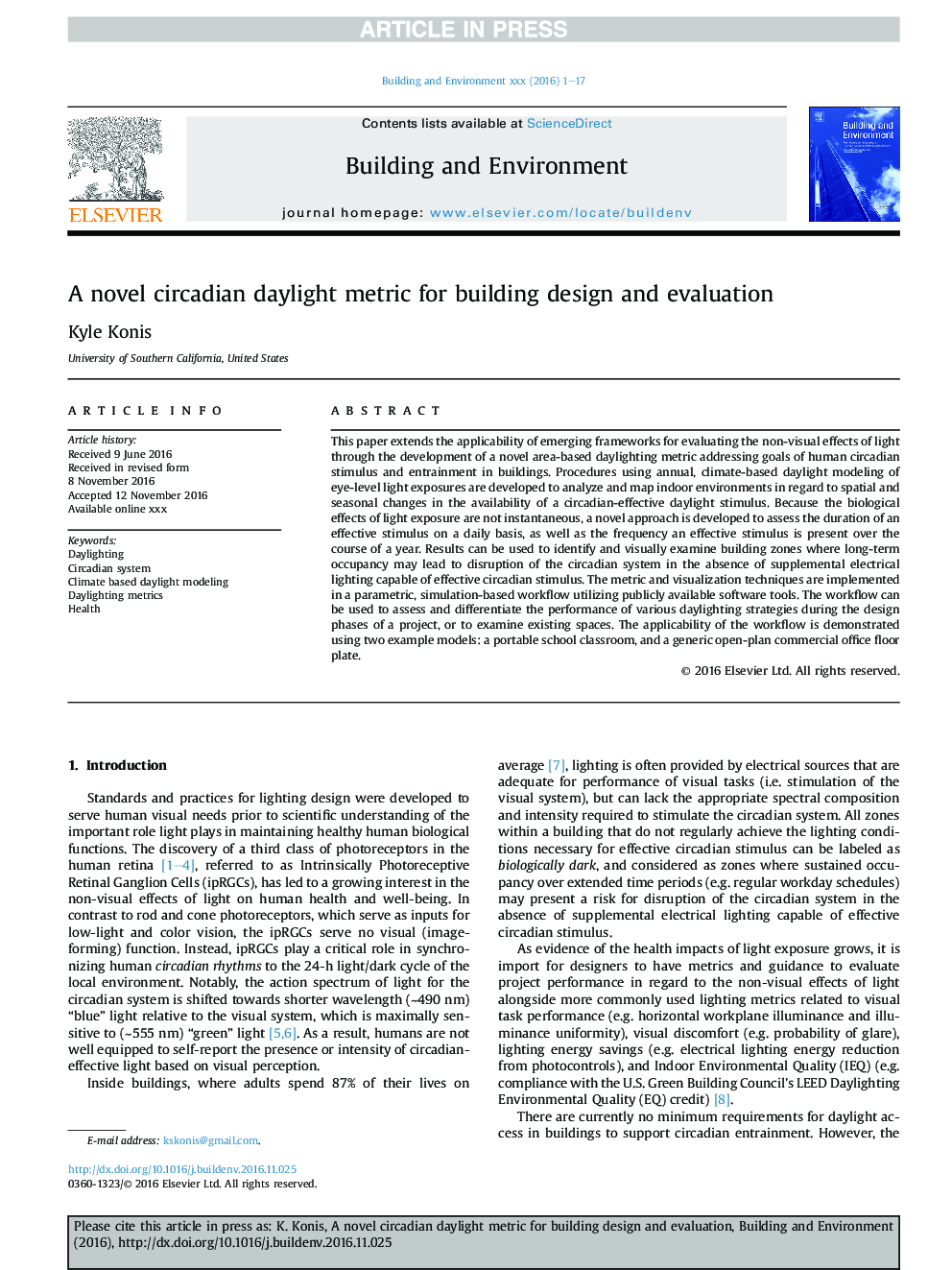| Article ID | Journal | Published Year | Pages | File Type |
|---|---|---|---|---|
| 4917348 | Building and Environment | 2017 | 17 Pages |
Abstract
This paper extends the applicability of emerging frameworks for evaluating the non-visual effects of light through the development of a novel area-based daylighting metric addressing goals of human circadian stimulus and entrainment in buildings. Procedures using annual, climate-based daylight modeling of eye-level light exposures are developed to analyze and map indoor environments in regard to spatial and seasonal changes in the availability of a circadian-effective daylight stimulus. Because the biological effects of light exposure are not instantaneous, a novel approach is developed to assess the duration of an effective stimulus on a daily basis, as well as the frequency an effective stimulus is present over the course of a year. Results can be used to identify and visually examine building zones where long-term occupancy may lead to disruption of the circadian system in the absence of supplemental electrical lighting capable of effective circadian stimulus. The metric and visualization techniques are implemented in a parametric, simulation-based workflow utilizing publicly available software tools. The workflow can be used to assess and differentiate the performance of various daylighting strategies during the design phases of a project, or to examine existing spaces. The applicability of the workflow is demonstrated using two example models: a portable school classroom, and a generic open-plan commercial office floor plate.
Keywords
Related Topics
Physical Sciences and Engineering
Energy
Renewable Energy, Sustainability and the Environment
Authors
Kyle Konis,
